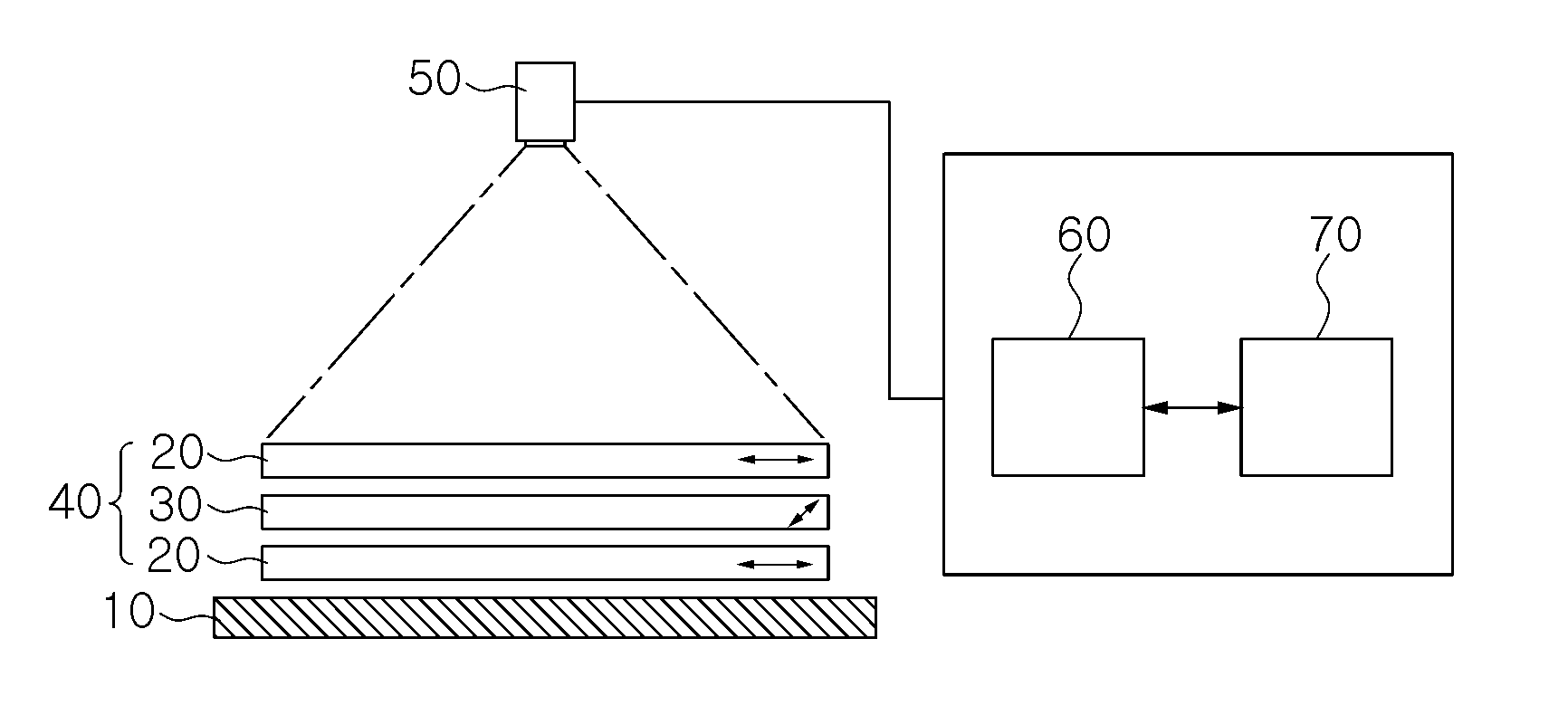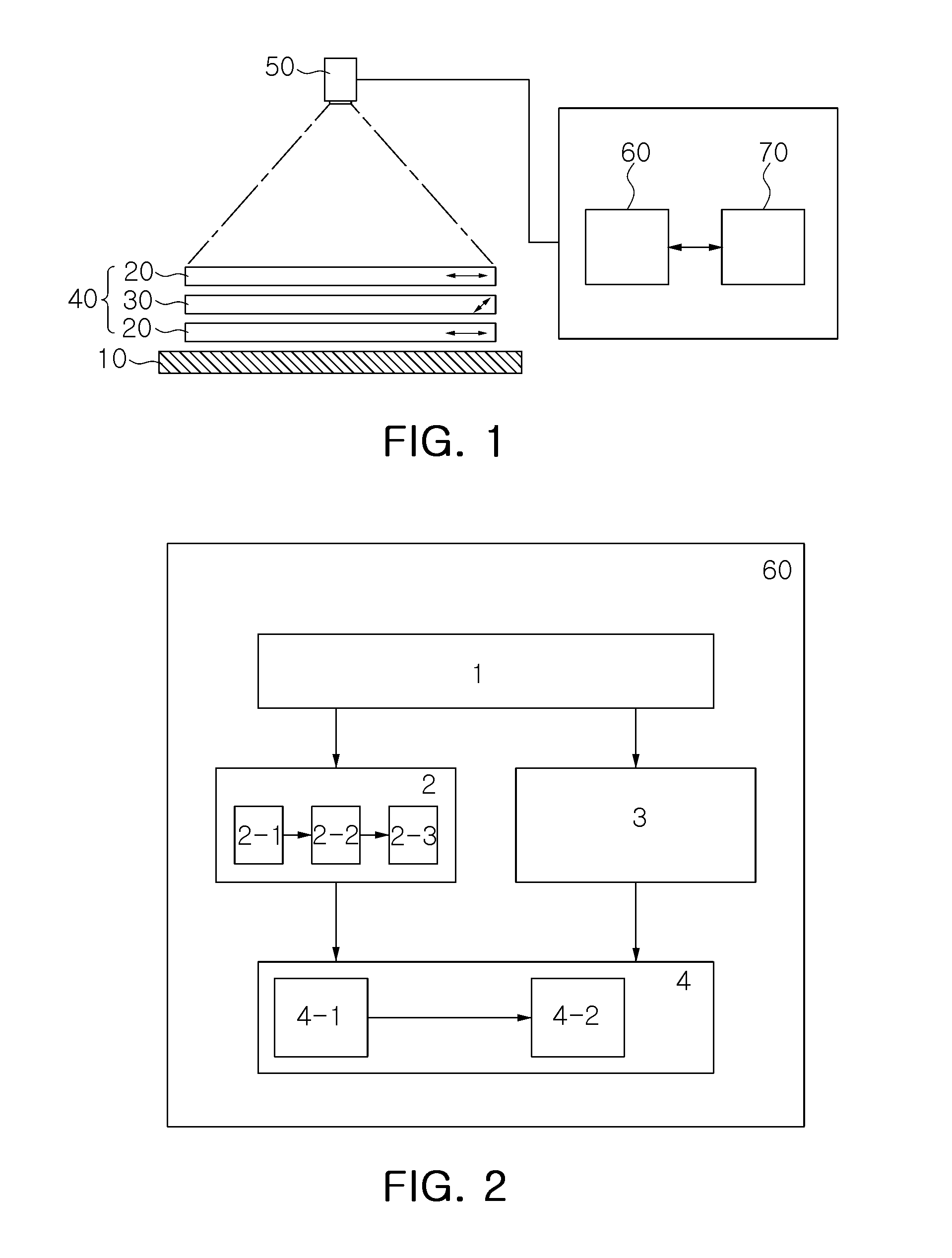Automatic inspection apparatus for detecting stains on polarizing plate using color difference analysis and inspection method thereof
a technology of color difference analysis and automatic inspection, which is applied in the direction of optically investigating flaws/contamination, optical radiation measurement, instruments, etc., can solve the problems of difficult to produce products having uniform product quality, uneven brightness of the screen, and striped stains on the polarizing plate. to achieve the effect of accurate inspection results of actual stains
- Summary
- Abstract
- Description
- Claims
- Application Information
AI Technical Summary
Benefits of technology
Problems solved by technology
Method used
Image
Examples
example 1
[0100]A non-elongated PVA film was dyed in a dye bath at a temperature of 25° C. to 30° C. for a retention time of 1 to 5 minutes, and elongated 5 to 6 times to thereby prepare a polarizing element. Here, ‘UZ grade’ having a haze and a thickness of 800n were used as a protective film of the polarizing element.
[0101]After the manufactured polarizing plate was mounted on a reference polarizing plate (manufactured by LG Chemicals, RB60SR10, a level of transmittance: 39.7%), it was irradiated with light using a 42-inch backlight (LG display, a color temperature of 10,000K). Here, an absorption axis of the manufactured polarizing plate was inclined with respect to that of the reference polarizing plate in order to allow a level of brightness of the manufactured polarizing plate to be 5 nits, while being irradiated with light. Thereafter, an image of the polarizing plate was captured above the backlight using a digital camera (Nikon, D3100 Zoom lens), and the captured image was transferre...
example 2
[0102]A polarizing plate was prepared in the same manner as in Example 1, except that ‘WVEA’ (manufactured by Fujifilm Corporation, having a thickness of 60 μm) and ‘UZ Clear TAC’ (manufactured by Fujifilm Corporation, having a thickness of 60 μm) were used as a protective film. The manufactured polarizing plate was subjected to the same process as in Example 1 to calculate a maximum amplitude value and quantify the degree of staining. As a result of inspection of the polarizing plate, the maximum amplitude value and the numerical data value indicating the degree of staining thereof were stated in Table 1.
example 3
[0103]A polarizing plate was prepared in the same manner as in Example 1, except that ‘UZ’ and ‘UZ Clear’ having a thickness of 60 μm were used as a protective film. The manufactured polarizing plate was subjected to the same process as in Example 1 to calculate a maximum amplitude value and quantify the degree of staining. As a result of inspection of the polarizing plate, the maximum amplitude value and the numerical data value indicating the degree of staining thereof were stated in Table 1.
PUM
 Login to View More
Login to View More Abstract
Description
Claims
Application Information
 Login to View More
Login to View More - R&D
- Intellectual Property
- Life Sciences
- Materials
- Tech Scout
- Unparalleled Data Quality
- Higher Quality Content
- 60% Fewer Hallucinations
Browse by: Latest US Patents, China's latest patents, Technical Efficacy Thesaurus, Application Domain, Technology Topic, Popular Technical Reports.
© 2025 PatSnap. All rights reserved.Legal|Privacy policy|Modern Slavery Act Transparency Statement|Sitemap|About US| Contact US: help@patsnap.com



